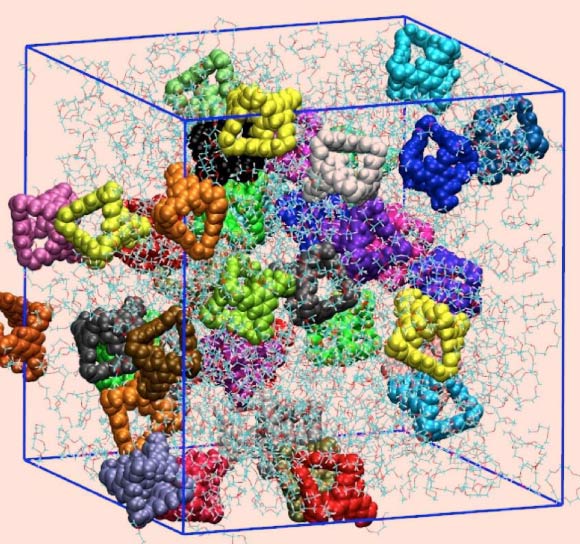An interdisciplinary team of chemists, physicists and material scientists from France, Germany, the United Kingdom and Argentina, has invented a ‘porous liquid’ and found that it can dissolve large amounts of gas.

Porous liquid. Image credit: University of Liverpool.
“Materials which contain permanent holes, or pores, are technologically important. They are used for manufacturing a range of products from plastic bottles to petrol. However, until recently, these porous materials have been solids,” said Prof. Stuart James of Queen’s University Belfast, co-author of a paper published this week in the journal Nature.
The new liquid dissolves unusually large amounts of gas, such as methane, the main component of natural gas, which is absorbed into the ‘holes’ in the liquid.
“This invention is a proof of concept and much work is needed to compete with porous solids. But it is an exciting direction, and liquids have a major advantage in that they can flow,” said co-author Prof. Andrew Cooper, from the University of Liverpool.
“Industrial chemical plants are often designed to use liquids and gases, rather than solids, because they can be moved around through pipes. But nature abhors a vacuum, and it proved very challenging to make a liquid with holes in it.”
The scientists have prepared a ‘porous liquid’ by taking rigid organic cage molecules, each of which defines a molecular pore space, and dissolving them at high concentration in a solvent that is too large to enter the pores.
“What we have done is to design a special liquid from the bottom-up. We designed the shapes of the molecules which make up the liquid so that the liquid could not fill up all the space,” Prof. James explained.
“Because of the empty holes we then had in the liquid, we found that it was able to dissolve unusually large amounts of gas.”
“These first experiments are what is needed to understand this new type of material, and the results point to interesting long-term applications which rely on dissolution of gases,” Prof. James said.
“We have managed to demonstrate a very new principle – that by creating holes in liquids we can dramatically increase the amount of gas they can dissolve. These remarkable properties suggest interesting applications in the long term.”
_____
Nicola Giri et al. 2015. Liquids with permanent porosity. Nature 527, 216-220; doi: 10.1038/nature16072





![Chemical structure of the cyclo[48]carbon [4]catenan. Image credit: Harry Anderson.](https://cdn.sci.news/images/2025/08/image_14141-Cyclo-48-Carbon-104x75.jpg)

